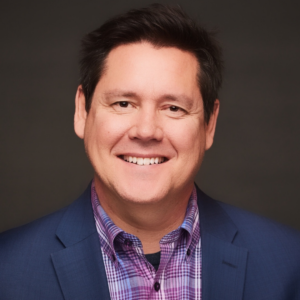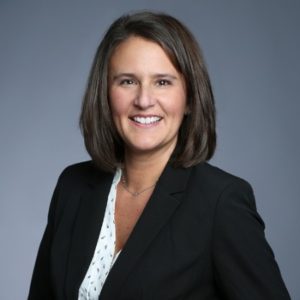New information technology: Getting staff on board
Introducing new information technology—software and hardware—to a long-term care operation can be a daunting prospect. This is never more so than when trying to bring staff up to speed on the new program. The extent of a facility’s or organization’s success at training staff can make or break the project. One long-term care manager who is particularly experienced at meeting this challenge is Sandra Mitchey, LNHA, RAC-C, who has been spearheading IT developments at Heritage Enterprises, a 32-facility Illinois-based chain, for the past 18 years. From multiple product introductions, Mitchey has noted that the bottom line is to keep staff feeling positive, and that is a goal that takes several steps to achieve. Connie Hoselton, Heritage’s senior vice-president of human resources, joined with Mitchey in elaborating on this in a recent interview with Nursing Homes/Long Term Care Management Editor-in-Chief Richard L. Peck.
Peck:What have you found to be the greatest training need of long-term care staffs taking on a new IT system?
Mitchey:The greatest need is that staff across the board communicate with each other and work together.
Hoselton:It’s vitally important that each department knows how its work and understanding of the system affect the other departments. They have to realize that they’re really all in this together.
Peck:Once you’ve gotten staff’s attention about this, what’s the best way to get started?
Mitchey:Everything starts with a complete commitment to the project by upper management. It doesn’t do to have staff hearing one thing and observing another. That’s one way problems begin. Leadership also has to get across the idea that nobody “owns” anything, that the system is not just for the benefit of one group or another. All viewpoints and suggestions should be welcome from every quarter.
At Heritage we have a team of administration, department heads, finance, and other senior management, as well as managers of individual facilities involved in pilot projects, all discussing the needs, wants, and wishes of all members of the organization. In a smaller, single-facility approach, a team of department supervisors, the administrator, and the DON could collaborate in the same way. The vital thing is for the initial meetings to cut across departments and discuss everyone’s concerns.
Peck:Once the time for training arrives, what’s the best specific approach?
Mitchey:At Heritage we have a classroom with eight workstations. We can train 20 staff at a time, but prefer to train 8 at a time so that everyone has a workstation. We also do help desk–type phone training—that is, we are able to remotely control the individual’s cursor at the other end of the phone line to guide the individual through the program. This has been very effective, so much so that, although I used to make the rounds of our facilities to conduct this sort of training, I don’t have to do that so much anymore.
Peck:What about having people learn the system hands-on, on the job? Is that effective?
Mitchey:We prefer not to do it that way. People just get too frustrated and they end up not liking the software. We try to do anything to avoid that happening, and to make sure that they stay comfortable with the system and have a positive outlook.
Peck:What about the perennial problem of staff turnover, which can hamper even the best training programs? How do you accommodate that?
Mitchey:We’re evaluating something that could be the answer to this—e-learning modules for individual training on demand. There are several available now, and we’re looking for something we can locate in a quiet area, not too congested but not shut off from the world either, where the CNA can sit down, log on, and get easy access to training in a number of areas. We’re looking at wall monitors and drop-down keyboards as another means of offering this. Other criteria for the e-learning modules would be that they’re easy to understand, use audio and video, are multilingual, offer good posttesting, and automatically track usage and individual grades. Our idea right now is to give our CNAs 10 of their state-required 12 hours annually of training, with the other two hours in-service. And we can provide this training at any time that it’s needed, and for anyone.
Peck:What about management, such as administrators and DONs—are they expected to have some degree of expertise or involvement with IT?
Mitchey:Expertise, no, but at Heritage we are looking at developing training in many areas using a software that enables us to write modules according to our own policies and procedures. The modules go into such areas as corporate compliance, employee relations, wage-hour administration, public health regulations, and facility safety, including fire codes.
Peck:It’s interesting, the training model that you’ve adopted for a multifacility organization: You pilot things at one or two facilities, make needed improvements, and the training grows from there. Would you elaborate on this?
Mitchey:This is an approach that’s been tested, tried and true. The key here is that every facility needs a champion for the IT system, someone who is willing and able to bring the system into the facility, train everyone, troubleshoot, and give support. We ask facility leadership for nominations of such individuals, then interview these people and train the trainers. It doesn’t matter what level of facility staff they occupy, as long as they can fill this role. I know of one CNA who is a natural at this, in fact who is so good and supportive that she can train RNs without complaint because they see that she is positive in her approach and works well with staff.
We never audition administrators or DONs for this role simply because they’re too busy. But this is an excellent way to surface good staff, to whom we can offer further support with ongoing education or our nursing scholarship program.
Once a system is running well in one or two facilities, we start moving into the other facilities, looking for champions all the way.
Peck:What about the often-used argument that training, while a good idea, is just too expensive, with little return on investment?
Mitchey:One long-term return is that this is getting us ready for electronic health records, which the federal government has targeted for implementation in healthcare by 2010. With this facing us, we would like to approach it in a logical, formatted manner rather than wait for government to try to do it at the last minute. But then, we think that Heritage has always been cutting edge when it comes to IT, at least since the early 1990s. While I haven’t seen anything in writing on return on investment, I know there have been returns in increased satisfaction and more efficient documentation and operations.
Hoselton:We’re talking about better access to information with modern IT systems, access to better reports that are more readily available, often at the click of a couple buttons.
Mitchey:Yes, one example is that all top management now can get daily census reports, any time they want by accessing the data from their own PCs. We’re saving a huge amount of time on that function.
Hoselton:It’s the same with accounts receivable. We have lost two AR people who we are not likely to replace in ’07 because of the increased efficiency of the system.
Mitchey:Time is money, and it depends on whose time you’re saving as to how much money you save, and that is money that can be applied to other facility operations.
Peck:Any final comments?
Mitchey:To all intents and purposes the electronic health record is upon us now, and it’s time for facilities to start focusing on this. For example, we’re moving into electronic physician’s orders now. It’s a huge project, admittedly with not a lot of physician support at the moment, but we know it’s worth doing and we’re working hard at it.
For further information, phone Sandra Mitchey, LNHA, RAC-C, Clinical Software Manager, Heritage Enterprises, Inc., at (309) 823-7161 or visit https://www.heritageofcare.com. To send your comments to the editors, e-mail 2peck0107@nursinghomesmagazine.com.
Related Articles
Topics: Articles , Staffing , Technology & IT











